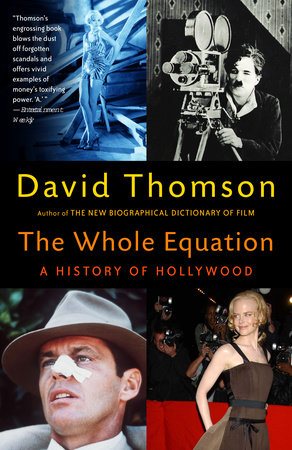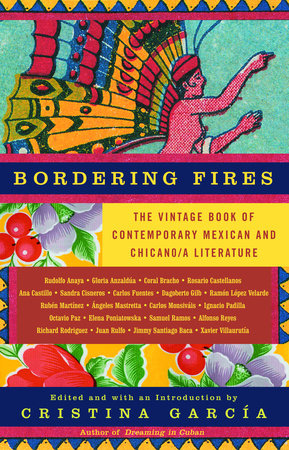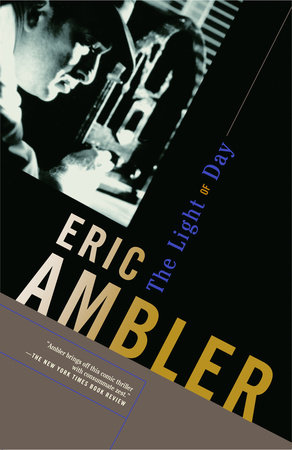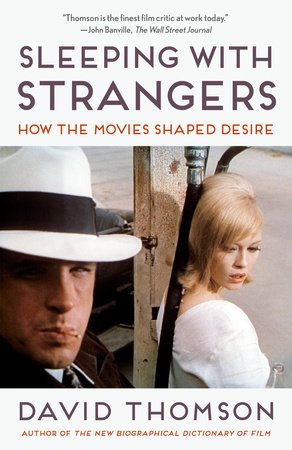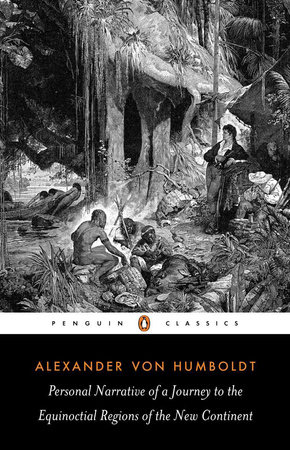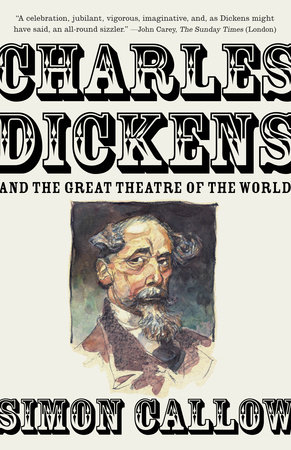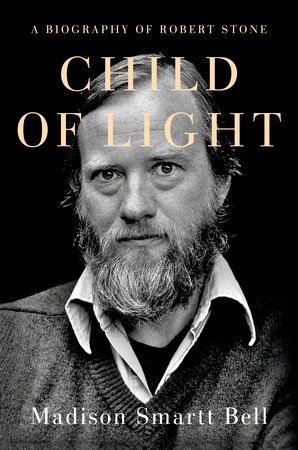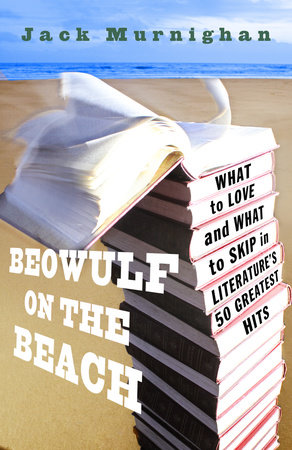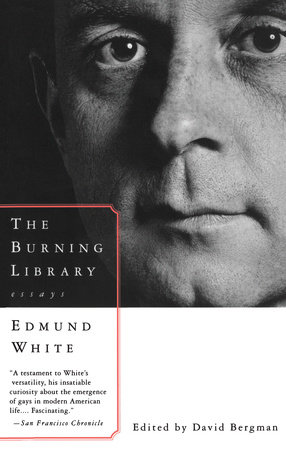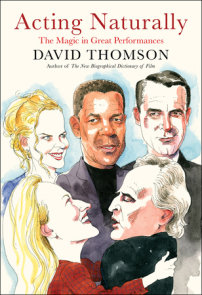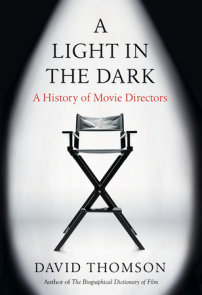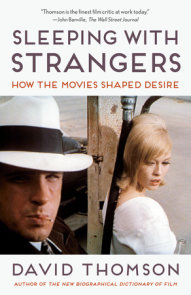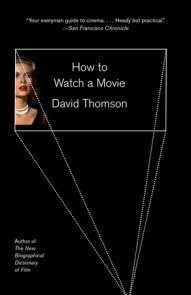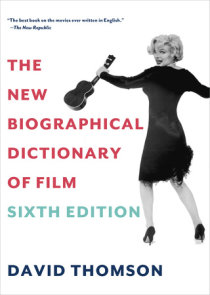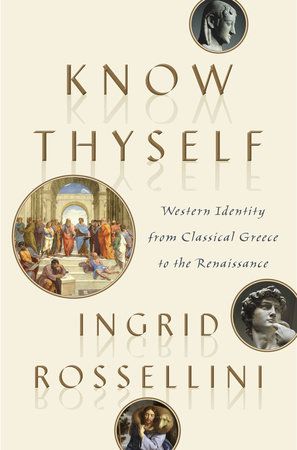Author Q&A
A Conversation with David Thomson
Q: The title of the book comes from F. Scott Fitzgerald’s The Last Tycoon, which says “You can take Hollywood for granted like I did. . . . Not half a dozen men have ever been able to keep the whole equation in pictures in their heads.” What did he (or you) mean by invoking this idea?
A: Like me, Fitzgerald had very mixed feelings about Hollywood. He was a novelist (one of our best, if briefly), yet clearly he was excited by this new form of story-telling–one at which he had failed notably, in his attempts to be a screenwriter. But Fitzgerald had been inside Hollywood. He had seen the mix of monsters and brilliant people, and he understands how much (in the ‘30s, say) movies moved the public. He was also alarmed about the ruthless role of profit in movies, and the pressure to make successes as opposed to pictures that challenged and changed America.
Earlier than most people, he recognized that how decisions were taken in Hollywood mattered to the overall culture of America–our minds were being shaped now by the new story-telling. He was unsure how that process was going to work itself out, but he saw a classic struggle between business and art, and he recognized that there were leaders of the industry who were trying to have the best of both worlds. His central character, Monroe Stahr (based on people like Irving Thalberg and David Selznick) is a wonderful example of that conflicted urge to make a fortune and make art at the same time.
Can it be done? Or is the attempt a dangerous compromise? The questions hang over us as much in the age of Michael Eisner and Harvey Weinstein as they did in the ‘30s.
The other important thing about the Fitzgerald book is its wonderful, inside account of how the place worked. No one had done that before. What Fitzgerald meant–and it’s true to this day–was that very few people have had the ability to make great pictures and run a prosperous business for very long. “The whole equation” doesn’t exist–you can’t expect to look it up or find it in your fortune cookie–for truly it is the daily habit of having the right hunches. But Steven Spielberg has it in the way Chaplin did. And that handful of rare beings have changed us.
Q: You talk about the importance of Hollywood and Los Angeles to the movies because, among other reasons, they gave the movies a language of light, space, and movement that was unlike anywhere else. In contrast to other places making films–England, for example–how did this make Hollywood films different?
A: It is still sinking in, in the USA, that a country founded and formed on the Eastern seaboard according to European models, and inhabited by exiles or escapees from Europe, began to shift westwards at just about the moment the movies came into being. So it’s important to understand how “Hollywood” is the nation state made by essentially very poor Jewish immigrants from Europe. Imagine the astonishing sense of plenty. Imagine the impact of space and light. And in a very real way, space and light are not just the media of American movies but the subjects and the guiding ideas. So the movies, famously, helped build California, Los Angeles and the West and built many new ideas about what America was–for one, a place wide open to Hispanics and Asians, a place where pioneering could vault from povert to wealth, and a place that would become a stronghold of American liberalism. And movie-making elsewhere never has quite the exhilaration of Californian films. What I am talking about is the energy, the optimism and the sense of a possible happiness that shine out of the American movie.
Like it or not, the last election was a battle between Western and Eastern ideologies–and maybe the first clear-cut election where dream and fantasy eclipsed fact. This is not necessarily good or healthy. But it is American, and it is long time now since we had a president out of the old Eastern establishment (JFK, I suppose–but JFK loved Hollywood and movie stars, because his father had been in that business).
Q: You say that by 1935 movies had altered the world. Peter Bogdanovich has said that more people went to the movies during the silent film era than after because without language, film was more universal and had fewer distractions. Would you agree?
A: With respects to Peter, I disagree. The audience was large in the ‘20s. It had its first decline in the early 30s–and you can put that down to the way talkies required the English language and to the fact that people were short of money. But then in the later 30s the numbers picked up, rose during the war (the central reassuring experience in the history of movie-going) and peaked in the years right after 1945. After that they went into a steady decline. That goes on in this sense: the movies claim a greater monetary revenue than ever (but that is because of massive increases in ticket prices. In fact, a smaller portion of Americans go to the movies now than ever before. I think Peter overestimates the unifying power of silence. In fact, people ate up talkies, in part because the films got smarter and better, but also because in the combined circumstances of hard times and war, people went to the movies to feel good, and to feel together. And their fantasy in the dark was hugely enhanced by sound.
Q: You talk about the obligation of a shared experience as “absolutely fundamental to the beauty and art (and even to the social marvel) of what we call ‘movie.’” Can you explain a little further?
A: More or less in the twentieth century we begin to realize that we are a vast crowed–a mass. And masses require mass media–ways of reaching the crowd as a whole (compared with the individual processes of reading, looking at pictures, listening to music). So we have movies, radio, TV and now the internet. And by 2004 it is hard to think of our society functioning without them. Movie was the first great way in which the crowd could come together–to laugh at Chaplin, to weep for Lillian Gish, whatever–as a crowd. I say this because in the age of DVD it is more than ever likely that we are going to watch small screens alone in our room. So be it. The technology shifts. But I believe that it is for the good of society and the sense of sharing, if the mass believes they are together. And there again World War II (our last unquestioned war) is crucial in the history of sharing or democracy.
Q: When Charlie Chaplin was allowed back in the U.S. in ‘72 to receive an honorary Oscar “for the incalculable effect he had on making motion pictures the art form of this century,” you write “That’s what the Academy was always for–to blur the equation enough so that profit and fame could be called art.” What exactly do you mean?
A: What I mean by that is that the Academy was always set up to promote the film business. Bringing Chaplin back in ‘72 was a gesture without the apology that was required. It was a way of saving face without saying, candidly, look what happened in the Red scare years was wrong, illegal, absurd and un-American. The same failure to own up occurred when Kazan got his honorary Oscar. He needed to admit apology or sorrow for others. And the Academy needed to say that “we” (the studios) did wrong.
Q: In your discussion of the making of Chinatown, and the history of the screenplay, you mention that nothing kills creativity like success. Do you think this will always be the case in the movie business?
A: Well, my discussion of Chinatown is a bit more complex than that. Yes, on the one hand, success makes repeated success harder–so sequels are seldom as good as the originals. Once a thing has succeeded, it becomes more likely that people are doing what they do for the money. The more profound thing about Chinatown is that a writer had a superb idea and lost control of it because of the nature of the business. A trilogy (as intended) in which Chinatown is just part I would be, or might be, a remarkable statement about the development of America and the way business interests exploited the West–issues that still burn today.
Q: You are a self-confessed fan of the actress Nicole Kidman, and you say that movie-goers get to “fall in love” in the dark with actors and actresses to whom we are attracted. Who else for you has held that power or fascination?
A: The thing about falling in love at the movies is that you can fall every week. For myself, it’s a matter of tracing pictures seen at a certain age, so, one way or the other I fell for Joanne Dru, Donna Reed, Pier Angeli, Ida Lupino, Doris Day, Grace Kelly, and many others. And this still goes on. I think we all go to the movies to find people to love, and you can always sniff the air and get that public affection. It’s there for Johnny Depp. It was there for Dean, Brando and Clift. And, by the way, same-sex adoration is just as common as cross-sex. In turn, I think that has had a lot to do with gay feelings coming out of the closet.
Q: After a series of scandals in the ‘20s involving drugs, rape, and murder with movie stars like “Fatty” Arbuckle and the director William Desmond Taylor, lawyer Will Hays was enlisted to draw up a series of “thou shalt nots” for the movies–a production code of 13 laws which included things like, “do not make vice attractive; no prolonged passionate love scenes; no nakedness.” While you say that Hays was “an idiot and a humbug” and the code “had a chilling effect on the imagination, the vigor, the candor, and the artistic potential” do you think it forced directors to be more clever in how they would convey things like sex?
A: The Hays Code (like any set of silly rules) was a great stimulus to inventiveness. For example, Hitchcock read that a kiss couldn’t go on more than a few seconds, so in Notorious Cary Grant and Ingrid Bergman keep doing short kisses–and it’s a wildly sexy scene. I think the point that is interesting is that suggestion is often more creative than direct expression. And censorship nearly always increases interest in the thing it wants to stop.
Q: You talk about the changes to film “after the war” meaning World War II, for good and bad. What were the most significant ones to come about?
A: Well, they were many: the world had changed–the revelation of the war (concentration camps, nuclear weapons) took an edge off even American optimism–so films needed to get darker (film noir) and that alarmed some audiences. Next, the industry at last suffered the anti-monopoly legislation long threatened. The audience married and had children– less moviegoing–and then along came television to keep them at home. Add to that mix the insane un-American activities attack on some of the most interesting film-makers.
Q: While you say that the House Committee on Un-American Activities which blacklisted so many people in the industry in the ‘40s and ‘50s may be “no more,” you also say that “there were forces in America, business and political, that felt the danger of too many open, critical movies. We have not yet reversed that trend.” Can you explain a little further?
A: Only last week 60-odd ABC stations refused to run Saving Private Ryan because of the language soldiers used in the film and because it showed the shocking impact of bullets and explosion. We could easily be on the brink of a lot of nervous self-censorship for fear of government disapproval. It is still hard to make movies that seriously challenge American orthodoxy.
Q: You talk about the influence of TV: people coming of age in the ‘60s and ‘70s getting so used to moving imagery and the repetitive narratives, they could no longer take them seriously, so that’s when things started to become “camp” or “ironic” (like Myra Breckinridge and Some Like it Hot). Prior to this shift do you think people took movies more seriously?
A: Yes. When I went to movies as a child, I believed in the stories–they were silly stories very often, but I cared about the characters. My 15-year-old son (one of the people to whom the book is dedicated and a very big influence on it) loves the movies–but he never believes in the stories. He thinks that’s for fools. In other words, he treats movies the way I do ads. He knows they are fake and manipulative. Still, he wants to make movies. But music moves him–not films.
Q: Did Jaws and the “blockbusters” that followed irrevocably change movie-making?
A: Yes. In so many ways. Jaws identified mass openings with huge TV advertising. It discovered the teenage audience, happy to go back again. And it found a compelling form of total fantasy–impossible dreams (the start of computer imagery and special effects). We don’t really believe in that kind of shark, we know the story could not happen (another kind of campness); and it stressed horror as the last genre that worked.
Q: What would F. Scott Fitzgerald make of Hollywood today, do you think?
A: He’d want to read The Whole Equation quickly. He’d be sad, very sad–but he was when he was alive. I hope he’d salute my book and we could share a drink, or seven. I would love to try to finish The Last Tycoon the way he laid it out.
Q: On your epigraph page you quote Gore Vidal as saying, “Find out the movies a man saw between ten and fifteen, which ones he liked, disliked, and you would have a pretty good idea of what sort of mind and temperament he has.” Would you agree with that and can you remember one or two of your own favorites?
A: Oh yes, I quoted it because I agree–though my years started a bit younger than Vidal’s. For me, the list of key films includes Red River, The Third Man, Meet Me in St Louis, Rear Window, From Here to Eternity, A Place in the Sun, East of Eden, Rebel Without a Cause.
